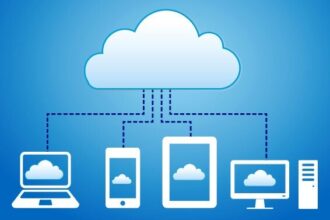One of the most powerful aspects of social media and the social business intelligence it enables are the derivative properties of the massive social conversations taking place every day. Not only do people tweet, post and blog on a continuous basis, but also they do so while engaging in a wide array of other activities.
One of the most powerful aspects of social media and the social business intelligence it enables are the derivative properties of the massive social conversations taking place every day. Not only do people tweet, post and blog on a continuous basis, but also they do so while engaging in a wide array of other activities. From eating and drinking to watching entertainment to reading, just to name a few, the social conversations of consumers often reveal tremendous insight on their interests, activities, likes, dislikes, attitudes and behaviors simply as a byproduct of their ‘off-line’ engagements while engaging online.
This has dramatically increased the value of these entertainment consumers given the deep ‘big data’ social intelligence gained on them through their millions upon millions of social discussions and the ability to intelligently and effectively engage with them based on their interests and activities.
Must Tweet TV
Television is a fascinating illustration of this. For decades, the measure of the reach of popularity of television programming has been largely conducted across a limited set of ‘TV families’ via set top box tracking and paper diaries. With social engagement, the measured audience not only gets expanded to millions of viewers from tens of thousands of traditional ‘TV families,’ but also allows for direct interactions and powerful intelligence extraction.
As a point of comparison ListenLogic developed a Involved Viewer Rating (IVR), which displays viewer social engagement relative to its audience size.

In many cases programs have weak relative audience sizes, like Sons of Anarchy (No. 39), Storm Chasers (No. 49) and Top Chef (No. 54). But in each of these cases, as well as several other listed in the rankings chart above, these shows have Top 10 Interactive Viewer Ratings (IVR), showing that their audiences are highly engaged and often evangelists for the programs.
Aside from benefitting from the dimension of viewer interaction, these programs also benefit from deep social intelligence on their viewers to deliver enhanced targeting for advertisers. Some savvy programs show their smarts by taking ad engagement beyond the TV screen the online social channels as well.
Achieving high rankings across the both size and interactive dimensions is very challenging. Over this ranking period, only one program (Dancing with the Stars) ranked in the Top 20 shows in terms of both audience size and IVR, and DWTS did it twice during this week. This conveys rare multidimensional influence in terms of reach and interactive social engagement of its audience. However, mainstream programs will likely attempt to break into the top spots of both dimensions with savvier social strategies.
Revolutionizing Ratings
In March, Tom Vanderbilt of Wired wrote an article* entitled ‘The Nielson Family is Dead,’ which stated:
“On February 7, the fourth season of Community kicked off on NBC. It was something of a shock that the show had survived for so long. It ranked 193rd among broadcast shows. In May 2012, series creator and showrunner Dan Harmon had been unceremoniously canned. And on the night it aired, the season premiere pulled in just 4 million viewers. That’s a mere quarter of the audience enjoyed by ratings juggernauts like Two and a Half Men or The Big Bang Theory. It even underperformed a rerun of the ABC reality show Shark Tank on the Nielsen charts.
Until recently, those 4 million viewers would have been the end of the story. Just a few years ago, similar niche favorites like Jericho and Firefly were summarily executed for such numbers. In fact, cult legend Freaks and Geeks averaged nearly 7 million viewers in its single, 1999-2000 season before getting canceled. But that night in February, Community accomplished something that none of those shows ever had the chance to do—it spawned two worldwide trending topics on Twitter.”
This is the case for shows with niche of ‘cult’ followings, including Sons of Anarchy, Glee, Top Chef, It’s Always Sunny in Philadelphia and a slew of others. The social dimension has transformed the how viewers watch and interact with shows. As Wired said:
“maybe the ratings are measuring the wrong thing. Since the 1970s, television has been ruled by the Nielsen Family—25,000 households whose TV habits collectively provide a statistical snapshot of a nation’s viewing behavior. Over the years, the Nielsen rating has been tweaked, but it still serves one fundamental purpose: to gauge how many people are watching a given show on a conventional television set. But that’s not how we watch any more. Hulu, Netflix, Apple TV, Amazon Prime, Roku, iTunes, smartphone, tablet—none of these platforms or devices are reflected in the Nielsen rating.”
Here is how some of these powerful ‘cult’ shows (Sons of Anarchy, Glee and Community) compared a program that is at the top of the traditional TV rankings (The Mentalist):

Quality Becoming King
When it comes to entertainment, sheer audience size doesn’t necessarily reflect an accurate measure of a program’s value. That’s not to say massive audiences don’t relay significant value. However, a deeply understood audience can also carry a tremendous amount of value to both the producers (to effectively direct a show’s storyline to drive demand) and the advertisers.
It’s understandable that the traditional audience size approach has survived for the past 50 years or so given the one-way channel television has been over that period. However, today with the countless ways for viewers to immediately react to and interact with their television programs, quality of viewers in terms of interaction and insight is matching sheer audience volume in many cases.
Programs that have high IVRs can gather deep, multidimensional understanding of their audience members via advanced social intelligence in terms of interests, activities, likes, dislikes, attitudes and behaviors. This ultimately can deliver better targeting and effective messaging to advertisers. This increases the efficacy, and thus the value of the program.
The power of entertainment across the array of channels (television, movies, Internet, apps, etc.) lies in the engagement of the audience. No longer is it simply about how many are watching, but now the value of entertainment is measured in the engagement of audience.
The IVR rating (developed by ListenLogic) cases in this piece are borrowed from the recently published book Social Business Intelligence: Reducing Risk, Building Brands & Driving Growth with Social Media (© 2013, hardback, 191 pgs., Ascendigm Press). Get your copy of the book here.








